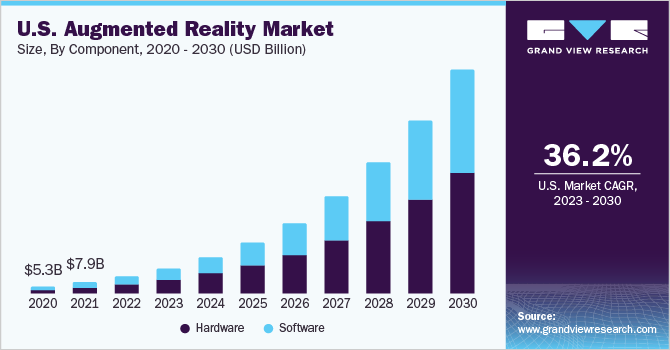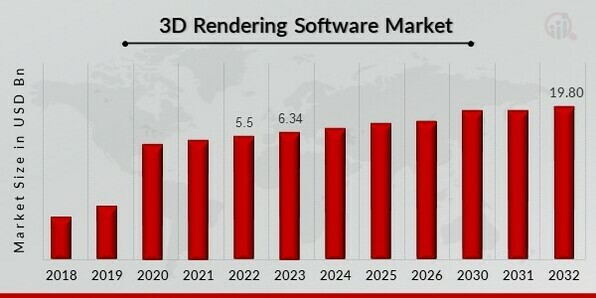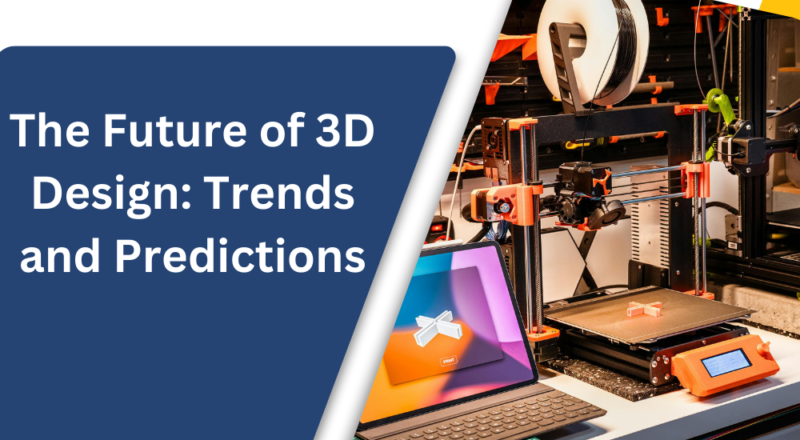3D design and predictions are a frontier of innovation and creativity in the ever-evolving design landscape. From architecture to animation, product design to virtual reality, 3D design has permeated various industries, reshaping how we perceive and interact with the world around us. As we stand on the cusp of a new era, it’s essential to delve into the trends and predictions shaping the future of 3D design.
What is 3D Design?
3D design, or three-dimensional design, refers to creating digital or physical objects and environments in three-dimensional space. Unlike traditional 2D design, which is limited to height and width, 3D design adds depth to the equation, allowing designers to create realistic representations of objects, characters, architectural structures, and more.
Top 3D Design Trends Shaping the Future
In the dynamic realm of 3D design, innovation is not just a buzzword but a driving force that propels creativity to new heights. As we step into a future where boundaries blur, and imagination reigns supreme, let’s take a closer look at the top trends shaping the landscape of 3D design.
Immersive Experiences: Augmented and Virtual Reality (AR/VR)
Gone are the days when 3D design was confined to screens; welcome to the era of immersive experiences.
According to a recent report by Grand View Research, the global augmented reality (AR) and virtual reality (VR) market size is expected to reach $766.7 billion by 2028, with a compound annual growth rate (CAGR) of 62.1% from 2021 to 2028. These staggering figures underscore the rapid adoption and growing demand for immersive technologies across various industries.

Source: (Grand View Research)
Augmented Reality and Virtual Reality (VR) are not just technologies but gateways to alternate realities where creativity knows no bounds. Imagine walking through a virtual museum, exploring ancient civilizations in AR, or immersing yourself in a virtual concert hall—all made possible through the magic of 3D design.
These immersive experiences are revolutionizing entertainment and reshaping industries such as retail, education, and healthcare. From virtual product trials to immersive training simulations, AR and VR are unlocking new dimensions of engagement and interaction, making 3D design more impactful and relevant than ever.
Generative Design: Co-Creation with Artificial Intelligence (AI)
In the world of 3D design, collaboration has taken on a whole new meaning with the rise of generative design powered by artificial intelligence (AI). According to a McKinsey survey, 68% of design professionals believe AI will allow them to focus on higher-value work such as innovation and creativity. This statistic highlights AI’s transformative potential in augmenting human creativity and productivity.
Generative design algorithms analyze data and parameters to generate countless design iterations, offering designers fresh insights and innovative solutions. Whether it’s optimizing structures for strength and efficiency or creating organic shapes inspired by nature, generative design is pushing the boundaries of what’s possible in 3D design, fueling a renaissance of creativity and innovation.
Read: What are the Advantages of Cloud-Based Software?
Sustainable Design: Crafting a Greener Tomorrow
As the world grapples with environmental issues, sustainability has become a top priority in 3D design.
According to a report by Deloitte, 83% of consumers globally say that companies must design products meant to be reused or recycled. This growing consumer consciousness is driving demand for sustainable design solutions across industries.
Designers harness the power of 3D modeling and simulation tools to create more sustainable products, buildings, and infrastructure. By simulating real-world conditions and analyzing environmental impacts, designers can optimize designs for energy efficiency, material usage, and recyclability.
Moreover, additive manufacturing, popularly known as 3D printing, is revolutionizing production, offering eco-friendly alternatives to traditional manufacturing methods. From biodegradable materials to circular design principles, sustainability is not just a trend but an absolute ethos driving the future of 3D design.
Real-Time Rendering and Visualization
Advancements in real-time rendering technology have transformed how designers visualize and present their designs. According to a report by Market Research Future, the real-time rendering market is expected to grow at a 14.3% CAGR from 2018 to 2023. This growth reflects the increasing adoption of real-time rendering tools across gaming, architecture, and automotive design industries.

Source: (Market Research Future)
Parametric and Procedural Design
Parametric and procedural design techniques enable designers to create complex, customizable 3D models easily. According to a survey by Autodesk, 72% of architects believe that parametric design tools positively impact project efficiency and quality. This statistic highlights the widespread adoption of parametric design techniques in the architecture and design industries.
Cross-Disciplinary Collaboration
Collaboration between designers, engineers, artists, and other disciplines drives innovation in 3D design. According to a Deloitte survey, 78% of executives believe that cross-disciplinary collaboration is essential for innovation. This statistic underscores the importance of interdisciplinary teamwork in pushing the boundaries of what’s possible in 3D design.
The boundaries between different industries will continue to blur, leading to greater collaboration and interdisciplinary approaches to design. Designers will draw inspiration from diverse fields such as architecture, engineering, biology, and art, incorporating elements to create innovative and holistic solutions to complex challenges.
Customization and Personalization
With the rise of additive manufacturing and on-demand production, customization will become more prevalent in 3D design. Consumers can personalize products according to their preferences, from customized apparel and accessories to bespoke furniture and home decor. Designers must adapt to this demand for personalized experiences, leveraging parametric design tools and customization platforms.
Advancements in 3D printing and digital fabrication technologies have enabled mass customization, allowing consumers to personalize products to their preferences. According to a report by Sculpteo, 71% of businesses believe that 3D printing enables mass customization. This statistic highlights the growing importance of customization and personalization in the 3D design industry.
Digital Twins and Simulation
Digital twin technology allows designers to create virtual replicas of real-world objects and environments for analysis and simulation. According to a report by MarketsandMarkets, the digital twin market is expected to reach around $48.2 billion by 2026, with a CAGR of 58.2% from 2021 to 2026. This growth reflects the rising demand for digital twin solutions across manufacturing, healthcare, and automotive industries.
Blockchain and Digital Rights Management (DRM)
Blockchain technology is leveraged to securely manage digital assets and protect intellectual property rights in 3D design, much like how music streaming platforms like Spotify and Deezer utilize blockchain-based solutions to ensure fair compensation for artists and safeguard copyrighted content.
According to a MarketsandMarkets report, the blockchain market is projected to soar from $3.0 billion to $39.7 billion between 2020 and 2025, representing a remarkable CAGR of 67.3% during the forecast period. This exponential growth mirrors the increasing adoption of blockchain technology across diverse sectors, including finance, healthcare, supply chain management, and digital entertainment.
3D Design Predictions to Watch in 2024
Predicting the future of any field, especially one as dynamic and rapidly evolving as 3D design, is challenging yet intriguing. However, based on current trends as well as emerging technologies, here are some predictions for the future of 3D design:
Real-Time Collaboration in 3D Design
With the advent of cloud-based platforms and real-time rendering technologies, collaboration among designers from different locations will become seamless and efficient. Design teams can work on projects simultaneously, iterating in real-time and sharing feedback instantaneously. This real-time collaboration will accelerate the design process and foster creativity and innovation.
Integration of Artificial Intelligence and Machine Learning (ML)
AI and ML algorithms will play an increasingly significant role in 3D design, assisting designers in generative design, automated optimization, and content creation tasks. AI-powered tools will analyze vast datasets and user preferences to generate personalized design solutions, unlocking new levels of efficiency and creativity.
Augmented Reality (AR) in Design Exploration
As AR technology advances, designers will leverage it as a tool for immersive design exploration. AR-enabled devices allow designers to overlay virtual prototypes onto physical environments, enabling stakeholders to visualize designs in real-world contexts and providing valuable insights early in the design process.
Environmental Sustainability as a Core Design Principle
As awareness of environmental issues grows, sustainability will become a fundamental consideration in 3D design. Designers will prioritize eco-friendly materials, energy-efficient processes, and lifecycle assessments to minimize their designs’ environmental impact. Sustainable design practices will align with consumer preferences and create a more sustainable future.
The Rise of Biodesign and Living Materials
With advancements in biotechnology and materials science, designers will explore the potential of design and living materials in 3D design. Living organisms and biomaterials will be integrated into products and structures, offering unique properties such as self-healing, self-regeneration, and adaptability. Biodesign will revolutionize industries ranging from healthcare and architecture to fashion and consumer goods.
Integrating living organisms and biomaterials into 3D design opens up new possibilities for innovative designs. According to an Allied Market Research report, the global Biodesign market is expected to reach $17.2 billion by 2026, with a CAGR of over 14.7% from 2019 to 2026. This growth reflects the increasing adoption of Biodesign techniques in healthcare, architecture, and consumer goods industries.
Ending Note
As we embark on this journey into the future of 3D design, one thing is clear: the possibilities are limitless. From immersive experiences to AI collaboration, sustainability, and democratization, the landscape of 3D design is evolving rapidly, reshaping industries and unlocking new creative frontiers.
By embracing emerging technologies, fostering collaboration, and embracing sustainable practices, designers can shape a future where creativity knows no bounds. As we navigate the challenges as well as opportunities ahead, let us embark on this journey with curiosity, imagination, and a steadfast commitment to pushing the boundaries of what’s possible in the world of 3D design.
Author’s Bio:
Dilshad Durani is a seasoned Digital Marketer and Content Creator currently contributing her expertise to the dynamic team at Alphanso Technology, a leading company specializing in an event management system in PHP and open-source event ticketing system development.
